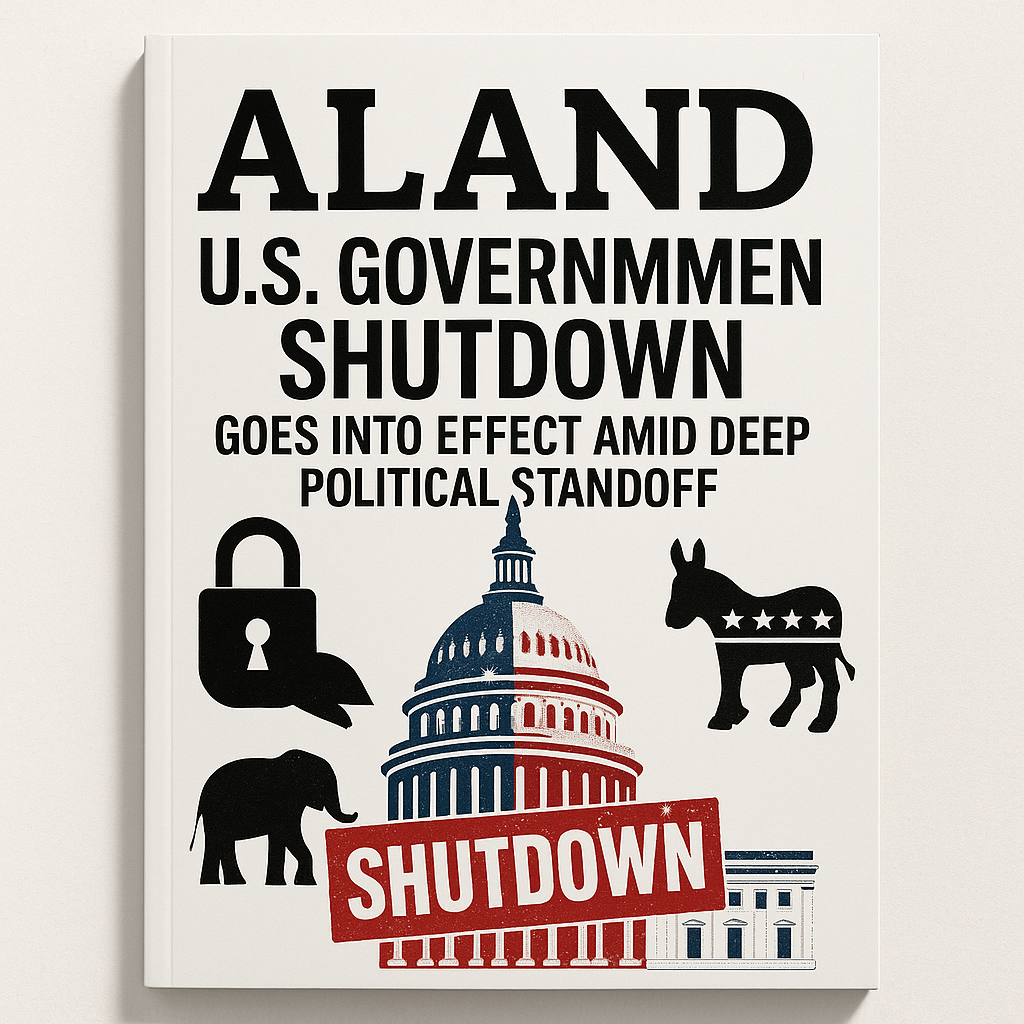U.S. Government Shutdown Goes Into Effect Amid Deep Political Standoff
Published Date: 1 Oct, 2025
Washington, D.C. — October 1, 2025 — At 12:01 a.m. Eastern, the U.S. federal government officially entered shutdown mode after Congress failed to approve full-year funding for the 2026 fiscal year. The impasse—rooted in disputes over healthcare subsidies, foreign aid cuts, and spending levels—has triggered a cascade of disruptions across multiple agencies and federal programs.
Why It Happened: The Political Gridlock
The shutdown is the result of a stalemate between House Republicans and Senate Democrats. Republicans pushed a so-called “clean” continuing resolution to keep funding flowing, but Democrats blocked it, demanding the renewal of enhanced Affordable Care Act (ACA) tax credits to avoid insurance premium hikes.
Meanwhile, the White House Office of Management and Budget (OMB) had already instructed federal agencies to prepare for “reduction in force” plans—a hint that this shutdown could include permanent job cuts rather than the usual temporary furloughs.
Senate Democrats voted down the Republican stopgap bill, with a 55–45 margin falling short of the 60 votes needed to avoid a filibuster.
House Democratic Leader Hakeem Jeffries accused the Republican leadership and President Trump of engineering the shutdown intentionally, saying they had “walked away from the table.”
What Remains Operational — and What Halts
Even in a shutdown, not everything grinds to a halt. The division falls along lines between mandatory spending, independently funded agencies, and discretionary programs.
Continuing operations:
-
Social Security and Medicare/Medicaid remain active.
-
The U.S. Postal Service, due to its independent funding, continues mail delivery.
-
Military personnel, air traffic control, and border security staff will stay on the job—but often without pay until the shutdown ends.
-
Some health and safety functions will persist in limited capacities.
Suspended or scaled-back services:
-
Many federal agencies will furlough staff. The SEC, for instance, plans to furlough over 90% of its workforce, retaining only a skeleton crew for emergency functions.
-
The CDC will see 64% of staff furloughed; the NIH will furlough 75% if the shutdown continues.
-
National Park Service is partially open: roads, trails, and open-air areas will remain accessible, but buildings, visitor centers, and gated parking lots may close.
-
Certain health outreach programs, grant administration, regulatory reviews, and scientific research could be paused.
Scale & Human Cost
Estimates place up to 750,000 federal workers at risk of furlough each day of the shutdown, with losses amounting to roughly $400 million in unpaid compensation per day.
Importantly, under the Government Employee Fair Treatment Act of 2019, furloughed federal workers are guaranteed retroactive back pay once funding is restored.
That said, the possibility of permanent job cuts looms large given recent signals from the administration. Unions and lawmakers have expressed alarm.
Federal health agencies, already operating on tight budgets, face particularly severe strain. Over 30,000 workers in the Department of Health and Human Services (HHS) may be furloughed, affecting NIH, CDC, and oversight functions.
Market & Economic Ripples
The shutdown has immediate implications for financial markets and regulatory oversight:
-
Regulatory agencies like the SEC and CFTC will operate with drastically reduced staff, slowing activity in IPO reviews, ETF approvals, and crypto regulation.
-
Market volatility is expected to rise, especially as the flow of economic data slows.
-
Despite the disruption, independently funded bodies like the Federal Reserve and FDIC remain unaffected.
What Happens Next — And What It Depends On
The duration and severity of the shutdown will largely hinge on whether Congress can break the impasse. Possible paths include:
-
Clean continuing resolution + later negotiation
-
Budget bill with concessions (e.g. ACA subsidies)
-
Incremental reopening for specific agencies
Negotiations are ongoing behind closed doors. The immediate focus is on securing medical subsidy extensions, which remain the key sticking point.
In the meantime, federal agencies and states are bracing for how to maintain essential services and deal with funding shortfalls.
Why This Shutdown Feels Different
Observers note a few features that set this shutdown apart:
-
The public signaling of permanent layoffs rather than just furloughs marks a new level of escalation.
-
Demand-side pressure around healthcare subsidies (particularly ACA credits) has become a central wedge issue.
-
Given ongoing global economic uncertainty, the timing heightens the risk that a prolonged shutdown could have ripple effects beyond U.S. borders.
As dawn breaks on October 1, tens of thousands of federal workers are left in limbo, agencies scramble to scale back operations, and millions of Americans face uncertainty over essential services. The gridlock in Washington underscores a broader political standoff—one with real consequences for governance and public trust.
Date: 1 Oct, 2025

